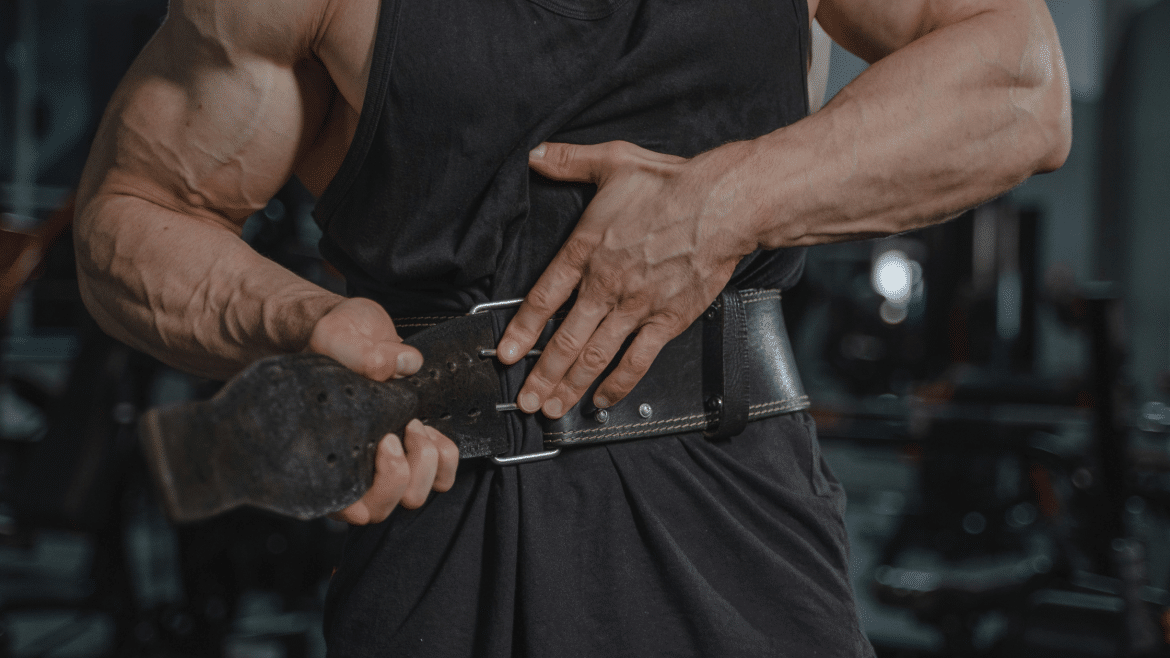 Apr
13
Apr
13
Weightlifting Belt Pros and Cons: Lifting Belts Explained
- 13 April 2025
- 0 Comment(s)
Strapping on a weightlifting belt before a heavy lift has become common in gyms worldwide. For many strength athletes, it provides stability and confidence, almost like wearing protective gear before taking on a challenge. But the real question is whether it truly enhances performance and reduces the risk of injury, or is it simply a habit formed from tradition and gym culture? The use of lifting belts often divides opinion within the fitness community. While some lifters believe belts are essential for reaching their maximum potential, others argue that they can become a substitute for proper core strength development. To better understand where the truth lies, this blog objectively looks at weightlifting belt pros and cons, and whether they are suitable for every lifter’s training routine.
Lifting Belt Pros
Injury Prevention
Have you ever heard the phrase, “An ounce of prevention is worth a pound of cure”? In gym talk, it means that if you’re trying to deadlift a small horse, protect your spine like it’s your Wi-Fi password.
A good lifting belt increases intra-abdominal pressure. It makes your core act like a tightly packed soda can. Solid and tough to crush. This pressure helps keep your spine stable during heavy lifts and reduces your chance of tweaking your lower back. Think of it as strapping a shield on your midsection before going into battle. Safety comes first, always.
Enhanced Abdominal Pressure
Let’s nerd out for a second. Imagine your core is a soda can. When it’s sealed and under pressure, it’s rock solid. But pop that top? It collapses with one hand.
A lifting belt helps “seal” your core, maintaining that all-important intra-abdominal pressure. The result? It offers better support, more control, and less risk of snapping your spine like a breadstick.
Psychological Support
Sometimes, the biggest lifts don’t happen in your legs or back; they happen in your head. There’s something about putting on a belt that flicks a mental switch. It tells your brain, “Yo, we’re going heavy today.”
That extra layer of psychological support boosts confidence, reduces hesitation, and makes you feel like an absolute unit walking up to the barbell. That belt might not be magic, but it feels magical sometimes.
Mechanical Feedback
Ever wish you had a coach constantly poking your ribs and yelling, “Brace your core!” every five seconds? Well, your belt can kind of do that. When worn correctly, it gives you a tactile reminder to stay tight and maintain good form. It’s especially handy for beginners still learning to brace properly.
Lifting Belt Cons
Growth Delays
Here’s the thing: if you always rely on the belt, your core might start slacking. Why put in the work when the belt does the heavy lifting, right? That’s the problem. Overuse can stunt your core development. It’s like using training wheels forever and wondering why you can’t balance without them. If your midsection doesn’t learn how to handle pressure naturally, it’s gonna tap out when the belt’s not there.
May Lead to Dependency
We all know that one guy who brings his lifting belt to warm-up squats with the bar. Don’t be that guy. Over-reliance on the belt can turn into a full-on dependency. You might think you can’t lift without it, even for lightweight movements. That’s not only untrue but a bit tragic. The belt should be a backup dancer, not the show’s star.
Neglecting Bracing Techniques
A belt can support you if you know how to brace properly. But too many lifters strap it on and forget the basics. If you don’t know how to breathe and brace without a belt, slapping one on won’t fix your mechanics. It’s like expecting a seatbelt to save you when you’re doing 90 mph around a corner with no brakes. Learn to brace first. Then belt up.
Modified Mechanics
Believe it or not, wearing a belt can change your lifting mechanics slightly. Some folks unknowingly start hyperextending or shifting their form because they feel extra supported. That’s not the belt’s fault, it’s yours for getting cocky. Always prioritize clean form over chasing ego lifts. When mechanics break down, injuries slide in like DMs.
Weightlifting Belt Pros and Cons: Should You Wear It?
Well, it depends. If you’re squatting or deadlifting heavy (we’re talking 80%+ of your one-rep max), the belt can help. It’s like having a spotter for your spine. But if you’re doing lighter sets, hypertrophy work, or focusing on technique, consider ditching the belt and training your raw core strength instead. Also, if you’re still mastering proper bracing, maybe hold off. The belt enhances good technique, and it doesn’t fix bad ones.
The Bottom Line
Weightlifting belts? Game-changers, if used the right way. They’re not a one-size-fits-all miracle, but they offer legit support, boost your mental game, and give your spine that extra hug it sometimes needs. Don’t let them become your crutch or a shortcut to skipping core work.
Remember, lift smart, not just heavy.
And, if you’re gonna lift like a pro, you might as well look the part, too. For instance, TD Sportswear crafts high-quality custom sportswear that you can match with your lifting gear, ensuring you feel like a beast and look like one. When is the fit on fire, and is your form on point? That’s a win-win situation right there.

